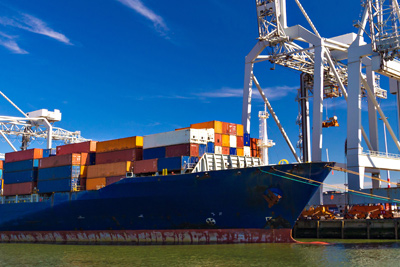Managing international trade risks to South Africa is critical for businesses seeking to navigate the country’s complex economic, regulatory, and logistical landscape. Whether you’re importing raw materials or exporting finished goods, understanding how to manage international trade risks to South Africa ensures compliance, protects profitability, and maintains supply chain stability. This guide outlines actionable strategies to mitigate key risks and foster successful trade relationships.
1. Assess Political and Economic Risks
Monitor Political Stability
- South Africa’s political climate can impact trade policies (e.g., tariff adjustments or export restrictions).
- Action Step: Subscribe to updates from the Department of Trade, Industry and Competition (DTIC) to track policy changes.
Manage Currency Fluctuations
- The South African rand (ZAR) is volatile. Use hedging tools (e.g., forward contracts) to lock in exchange rates for large transactions.
- Example: A clothing exporter secured a 12% savings by hedging ZAR against USD for a Q4 shipment.
2. Navigate Regulatory and Compliance Risks
Understand South African Standards
- Products must meet SABS (South African Bureau of Standards) certification (e.g., SANS 10142 for electrical appliances).
- Risk Avoidance: Misclassifying goods (e.g., labeling “cosmetics” as “health products”) can lead to fines up to ZAR 50,000.
Verify Import Licenses and Tariffs
- Use the SARS Tariff Database to confirm HS codes (e.g., HS 6203 for apparel) and tariff rates (average 5–15%).
- **Tip:** 某些医疗设备可享受免税政策,需提前向 SAHPRA 申请许可。
3. Mitigate Supply Chain Disruptions
Diversify Logistics Providers
- Rely on multiple shipping routes (e.g., sea freight via Durban + air freight via Johannesburg) to avoid port strikes or delays.
- Case Study: A electronics importer reduced delays by 40% by using China Top Freight’s combined sea-rail service during peak seasons.
Optimize Inventory Management
- Maintain safety stock for critical components (e.g., 2–3 months of inventory for automotive parts) to buffer against transit delays.
4. Manage Payment and Credit Risks
Use Secure Payment Methods
- Prioritize letters of credit (LCs) or escrow services for new partners to minimize non-payment risks.
- Statistic: 35% of South African trade disputes involve payment defaults; LCs reduce this risk by 60%.
Conduct Credit Checks
- Use credit reporting agencies (e.g., Dun & Bradstreet) to assess buyer creditworthiness before extending terms.
5. Address Legal and Contractual Risks
Draft Clear Contracts
- Include clauses for force majeure, dispute resolution (e.g., arbitration in Johannesburg), and intellectual property protection.
- Example: A tech firm avoided a ZAR 2 million lawsuit by specifying liability limits in their supply agreement.
Understand Local Labor Laws
- South Africa’s Labour Relations Act requires compliance with strict employee benefit and termination procedures for local operations.
6. Leverage Trade Insurance and Risk Tools
Invest in Trade Credit Insurance
- Protect against buyer insolvency or political upheaval (coverage typically costs 0.5–1.2% of invoice value).
- Success Story: A furniture exporter recovered ZAR 800,000 after a buyer’s bankruptcy thanks to insurance.
Partner with Experienced Freight Forwarders
- Work with providers like China Top Freight to manage customs clearance, documentation, and risk mitigation.
- Service Benefit: Their team ensures compliance with 南非的电子 customs 系统 ASYCUDA,reducing clearance delays by 2–3 days.
7. Stay Informed About Regional Dynamics
Monitor SADC Trade Agreements
- South Africa’s membership in the Southern African Development Community (SADC) offers tariff reductions for eligible goods.
- Opportunity: Exporters of agricultural products can save up to 20% on tariffs under SADC rules.
Engage with Local Chambers of Commerce
- Join organizations like the South African Chamber of Commerce and Industry (SACCI) for market insights and networking.
In conclusion, effectively managing international trade risks to South Africa requires a proactive approach to regulatory compliance, supply chain resilience, and financial protection. By leveraging tools like trade insurance, diversifying logistics partners, and staying informed about policy changes, businesses can mitigate uncertainties and thrive in South Africa’s dynamic market. Collaborating with trusted partners like China Top Freight further enhances risk management, ensuring smooth cross-border operations and long-term success.


